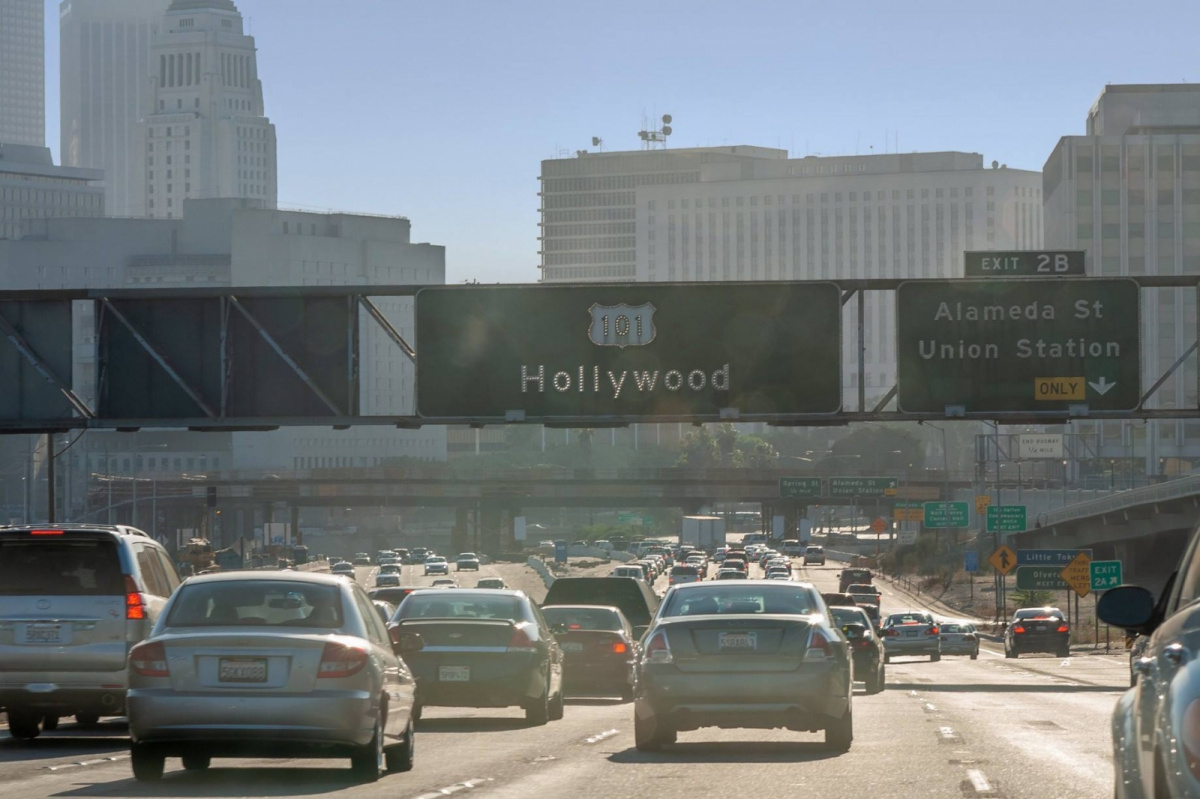America’s Highway to Hell (And Poverty)– How We All Lose from Road Spending

Cities across America spend billions expanding highways and building parking lots, believing more driving equals more prosperity. However, new research suggests the opposite: regions with the highest car dependency tend to exhibit lower economic productivity, while walkable areas with good public transportation generate significantly more wealth per person.
In “The Mobility-Productivity Paradox,” Todd Alexander Litman of the Victoria Transport Policy Institute analyzed the relationship between motor vehicle travel and economic productivity, using comprehensive federal transportation and economic data from multiple countries and time periods.
Key Takeaways:
- More driving correlates with lower state income: Vehicle miles traveled per capita shows a negative correlation with state GDP per capita.
- Vehicle ownership peaks and then declines with national wealth. International data show that car ownership rises until countries reach a GDP per capita of $50,000, after which it declines despite continued income growth.
- Metro areas with transit tend to outperform those that are more car-dependent. Urban regions with higher transit ridership, fewer highway lanes per capita, and population density tend to generate higher per-capita GDP.
The researcher analyzed data from the Federal Highway Administration, which tracks vehicle miles traveled and economic output across all 50 states, as well as international vehicle ownership data from multiple countries. Clear patterns emerge across these factors, questioning traditional assumptions around vehicle ownership and driving. The data reveals three ways transportation choices reshape regional prosperity:
States where people drive more tend to be poorer: Looking at all 50 states, there’s a clear pattern – states where residents drive more miles per year tend to have lower average incomes per person. This contradicts the assumption that more driving leads to greater prosperity. Consider that each car generates approximately $10,000 in annual costs, including direct expenses, infrastructure costs, congestion costs, and pollution costs. This vehicle spending flows mainly to distant manufacturers, keeping only 11% local, while transit spending retains 75% of its value locally through wages and maintenance.
Once countries achieve a certain level of wealth, they tend to reduce the number of vehicles per person: When you track 131 countries from poorest to richest, a surprising pattern emerges. Poor countries have fewer cars per person. Middle-income countries purchase a larger number of cars as they become wealthier. However, once countries reach an average GDP per capita of around $50,000, they tend to start owning fewer cars per person, even as they continue to grow wealthier. Countries like Norway, despite having high incomes, own fewer vehicles per capita than some middle-income countries. This suggests that beyond a certain point, having more cars doesn’t make countries more prosperous (p. 4).
Transit infrastructure has a positive correlation with metropolitan economic performance: Metropolitan areas with more public transit service hours per capita tend to have higher GDP per capita; this connection is moderate yet clear when comparing areas nationwide. Meanwhile, metro areas with more urban road miles per capita tend to have lower GDP per capita, and this relationship is noticeably stronger than the one with transit. Population density exhibits a similarly strong correlation with economic success, as compact development enables businesses to cluster together and share the costs of infrastructure. Relatedly, neighborhoods near transit stations typically command property values 10-40% higher. This suggests that efficient transportation access creates more economic value than just having more roads and parking.
The data suggests there might be an optimal amount of driving – enough to get around efficiently, but not so much that it drains money from other productive activities. These patterns suggest that building walkable communities with good transit may create more wealth than expanding roads and parking lots.
Photo from Pix4free